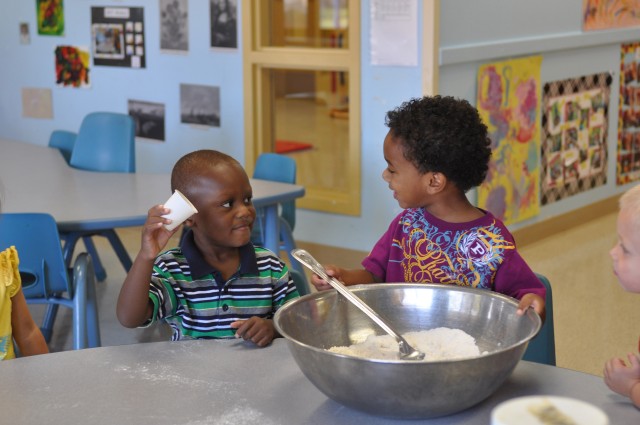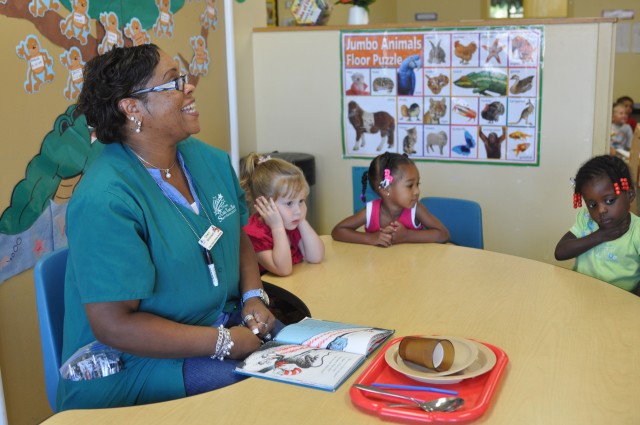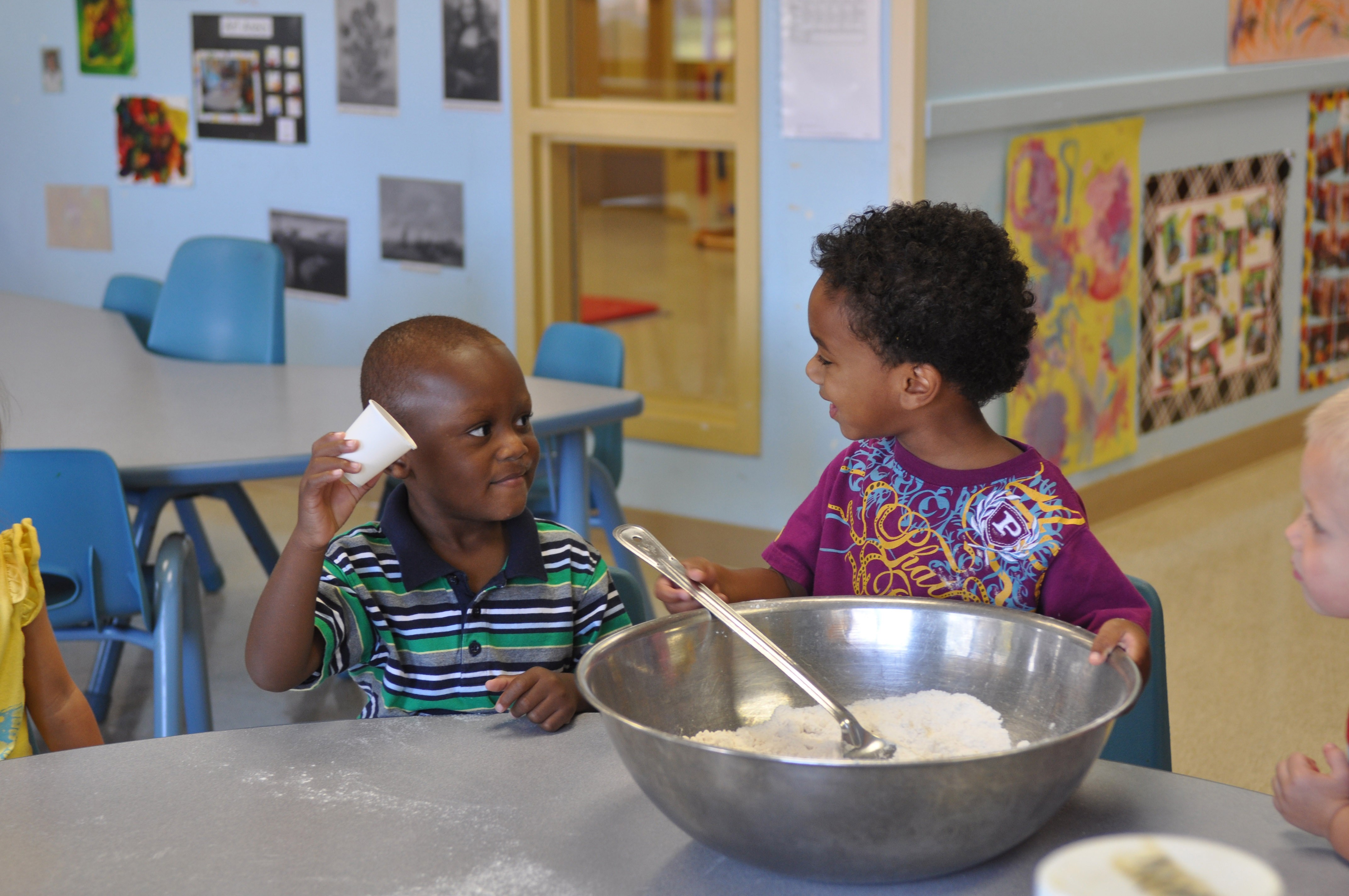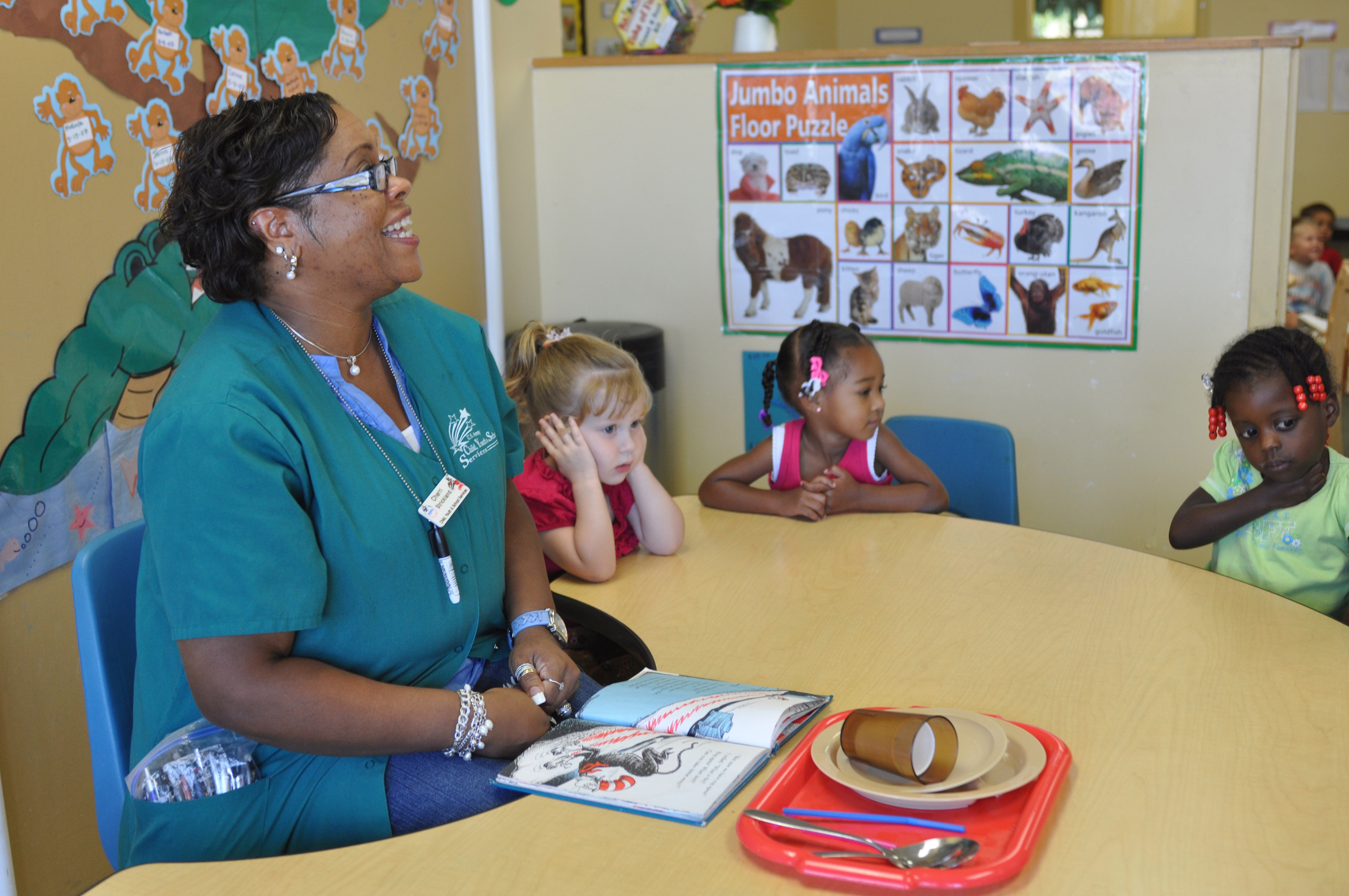FORT CAMPBELL, Ky. -- Child Development Centers on post provide the opportunity to track your child's growth and progress through the Creative Curriculum program.
Implemented a few years ago Army-wide, Creative Curriculum has seen widespread success at Fort Campbell. Sunny Smith, Child, Youth and School Services lead training specialist, helped implement the program on post.
The program helps track development, using progress reports, lesson plans, conferences and more. Creative Curriculum is designed to support children birth to 5 years old in their cognitive, emotional and social development, Smith said.
"It takes every area of a child's development and it tracks [that] development," Smith said.
In the classroom, Creative Curriculum helps instructors plan activities to encourage certain skills, behaviors and concepts. Observation and notes on each child are key, as it helps instructors better understand each child's individual needs.
"That's a main part of what Creative Curriculum is observing what they're doing, and planning for their needs," said Kate LaFave, mentor at Watters CDC #2. "The observations help [instructors] know what they want to plan for."
The program helps guide teacher-child interaction to produce a more productive experience.
"Creative Curriculum is also how you discuss things with the children; how you talk to the children; how you interact with the children," LaFave said. "So, it doesn't just encompass assessments. It encompasses how you set the room up, and how you interact with the children."
Fort Campbell implemented the Web-based portion of the program, www.creativecurriculum.net, in October 2009. Only a couple of other installations are using the website in conjunction with the program, Smith said.
"This is probably the most important part of Creative Curriculum," Smith said. "The online piece really takes the parent involvement part to a whole different level."
The website allows CDC instructors to post photos of the children during activities and record each child's progress for the day. Then, parents can sign in and have all this information at their fingertips, to help reinforce lessons at home or monitor what their children are learning.
"We put anecdotal notes about what children are doing during the day," Smith said.
The program integrates several different functions into one system, including assessments and observation notes.
"The best reason why it's been so good for us - it's a comprehensive program," Smith said. "The child develops as a whole."
It's not only the scope of the program that makes it a tool at Fort Campbell. Creative Curriculum is not a cookie-cutter model, but accounts for every child learning differently. Lesson planning can be crafted around the specific needs of children in the class, Smith said.
"It individualizes the curriculum," Smith said. " ... All develop at their own rate."
The developmental emphasis changes as children get older, as older children practice skills that they will use in kindergarten.
"There's an emphasis on literacy and math," Smith said for the older children. "It's helping them as they get ready for school."
Creative Curriculum's techniques are research-based, using findings by developmental psychologists, such as Jean Piaget and Erik Erickson, Smith said. This research is part of what makes the program effective.
"It's based on sound developmental theory," Smith said.
CDC instructors use Creative Curriculum as a guide to teaching concepts. Cherri Strickland, a teacher at Watters CDC #2, said the children understand concepts quickly when she uses lesson plans constructed with the program.
"I really enjoy Creative Curriculum because the kids get to experience and do hands-on things and also they get to learn different subjects and concepts," she said.
On Tuesday morning, Strickland taught the children about the difference between big and small using household items as comparison.
"Those are things that the children need to learn when they go to kindergarten," she said. "We have books to support it. We have activities. We have art. We have food experiences to get the concept through. We're supposed to go outside today ... and look for tall and short things."
Creative Curriculum's website offers convenience in communication - even for parents overseas. Smith said much of the positive feedback for the program comes from parents who are deployed. Soldiers can see the photos of their children and monitor their progress to help them stay in touch.
With much of the 101st Airborne Division deployed, Smith said this program has been helpful in keeping Soldiers connected with their children and increasing Family involvement throughout post. The reactions from deployed Soldiers are "so great it almost [makes] me cry," Smith said.
"It just really makes you want to go in there and do all you can do," Smith said.
Specialist Brandy Golder, 101st Sustainment Brigade, checks Creative Curriculum regularly to receive updates on her daughter.
"I love it, because I get to see what she's doing every day," Golder said. "They have different things in there. Even just the silliest things they have in there. I love it. I check it every day.
"It updates me on how she's doing."
Each parent must be invited by a CDC to take part in the Creative Curriculum website. In order to sign up, parents can provide their e-mail to the clerk at the front desk of any CDC to begin receiving communications. Families can provide more than one e-mail, if they wish, for parents that are deployed.
For more information on Creative Curriculum, visit the CYSS website: www.fortcampbellmwr.com/CYS/




Social Sharing